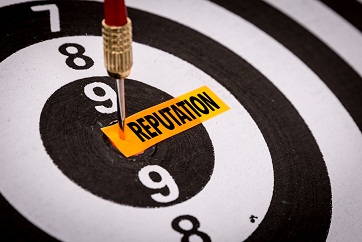THE MEANING AND POWER OF REPUTATION: How to Build Reputation?

Abraham Lincoln once said that ‘Character is like a tree and reputation like its shadow. The shadow is what we think of it; the tree is the real thing.’
Today’s scholars, chief executives and PR professionals argue that they are the first to really understand reputation and advance the idea of the “brand”. Yet, Socrates shows that the concept of reputation – or one’s good name – is as old as civilisation itself, even though it seems harder to define than to understand.
What is Reputation?
Reputation reconciles the many images people have of an organisation – it is in essence the net image.
Brand and reputation are commonly mixed up, of course. “Reputation” comes from the Latin reputare, “to think over”, while “brand” comes from the Norwegian brandr, “to burn”. Stone seals were burned on bricks and pots in early civilisations to indicate quality, but also to show who was to blame if the product was faulty. So right from their earliest use, brand was the producer’s stamp (controlling one’s wares) and reputation was the public’s perception of those wares – different, but related.
Reputation management is the art of trying to get brand and reputation to converge: that is, to create a product that has a distinctive look and feel, which is recognised and appreciated by the consumer in the way that the producer wants it to be. If you get it right, there is money to be made.
Studies show that there is a strong correlation between value and reputation among companies listed in Fortune magazine’s top 200. The Turnbull Report, the guidance issued to listed companies on the London Stock Exchange, regards the monitoring of companies’ reputations to be as important as assessing financial risk. Research led by Charles Fombrun and published in the book Reputation: Realizing Value from the Corporate Image (1996) showed that a better reputation allows an organisation to win contracts on more favourable terms and, of course, to charge more.
How to Build Reputation?
How is reputation created and maintained? Good or bad, the reputation of an organisation is determined as a result of accumulated activities or actual substance. Reputation isn’t what we say about ourselves; it’s what others say about us – those on the outside looking in and, most importantly, those who have first-hand experience such as customers and staff.
Reputation can be visualised as three interlocking circles that can be drawn as a Venn Diagram. The first circle represents ‘Credentials’ – what an organization can attest to or prove as facts of attainment or value. The second circle represents ‘Perception’ – what outside interests like and say about you. The third circle ‘Desired’ refers to what the organisation has articulated as an ambitious future – the veritable ‘light on the hill’.
Like a Venn Diagram, the three circles should overlap. The more the three circles overlap the more alignment there is in the reputation of the organisation between its components – and the more robust (compelling and cogent) an organizations reputation will be!


